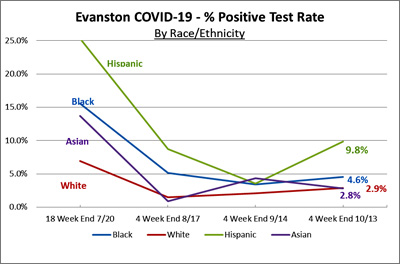PFAS In Tap Water: Nearly 100 Million Americans Affected, New Study Shows

Table of Contents
Understanding PFAS Contamination
What are PFAS?
Per- and polyfluoroalkyl substances (PFAS) are a large group of synthetic chemicals used in countless products for their water-repellent and heat-resistant properties. These include firefighting foams, non-stick cookware (like Teflon), food packaging, and various industrial processes. The unique chemical structure of PFAS makes them incredibly persistent, meaning they don't break down easily in the environment. This persistence is what earns them the moniker "forever chemicals."
Sources of PFAS Contamination
PFAS contamination originates from various sources, leading to widespread pollution of our water systems. Key sources include:
- Industrial sites: Factories using PFAS in manufacturing processes often discharge contaminated wastewater.
- Military bases: The use of aqueous film-forming foam (AFFF) containing PFAS in firefighting drills has resulted in significant contamination around many military installations.
- Wastewater treatment plants: These plants struggle to effectively remove PFAS, allowing them to pass through and contaminate receiving waters.
- Landfills: PFAS-containing products disposed of in landfills can leach into the surrounding soil and groundwater.
- Consumer products: The everyday use of non-stick cookware, stain-resistant fabrics, and food packaging contributes to PFAS entering our environment.
The Persistence of PFAS
The chemical stability of PFAS is a major concern. These “forever chemicals” are incredibly resistant to degradation, meaning they remain in the environment and our bodies for extended periods. This persistence leads to bioaccumulation, where PFAS levels gradually increase in living organisms over time, potentially reaching dangerous concentrations. The challenge in removing PFAS from contaminated water sources further exacerbates this problem.
Health Risks Associated with PFAS Exposure
Impact on Human Health
Numerous studies have linked PFAS exposure to a range of adverse health effects. The severity of these effects often depends on the level and duration of exposure. Concerns include:
- Kidney cancer
- Testicular cancer
- Liver cancer
- Thyroid disorders
- Immune deficiency
- High cholesterol
- Developmental effects in children – Pregnant women and children are especially vulnerable to the harmful effects of PFAS.
Symptoms of PFAS Exposure
While the long-term health risks associated with PFAS are well-documented, identifying immediate symptoms can be challenging. However, some potential symptoms include unexplained fatigue, liver problems, and immune system dysfunction. If you experience any concerning health issues and suspect PFAS exposure, it's crucial to seek medical attention for proper diagnosis and treatment.
The New Study and its Implications
Key Findings
A recent study, [Insert Citation Here – e.g., "A Comprehensive Analysis of PFAS Contamination in U.S. Drinking Water"], found alarming levels of PFAS in tap water across numerous states. The study estimates that nearly 100 million Americans are consuming water with detectable levels of these harmful chemicals. The most severely impacted areas [Insert Geographical Areas from Study].
Study Methodology
[Describe the study methodology, specifying the sampling methods, analytical techniques, and data analysis used. Highlighting the rigor of the study increases its credibility and strengthens the argument.]
What the Study Means for the Future
This new study underscores the urgent need for stricter regulations and improved water infrastructure to address PFAS contamination. The findings are likely to fuel increased public awareness, prompt further research into the long-term health effects of PFAS exposure, and potentially lead to significant policy changes aimed at reducing PFAS contamination and protecting public health.
Protecting Yourself from PFAS in Tap Water
Testing Your Water
Testing your tap water for PFAS is a crucial first step. Many certified laboratories offer PFAS testing services. You can find accredited laboratories through your state's environmental agency or online directories of certified water testing labs. [Include links to relevant resources].
Water Filtration Options
Several water filtration methods can effectively remove PFAS from drinking water. The most effective is often reverse osmosis (RO) filtration, which removes a broad range of contaminants including PFAS. Activated carbon filters can also reduce PFAS levels, though their effectiveness varies depending on the type of filter and the concentration of PFAS.
- Reverse Osmosis (RO): Highly effective, but more expensive and produces wastewater.
- Activated Carbon: Less expensive, but effectiveness varies. Requires regular replacement of filters.
Advocating for Change
Contacting your local and state representatives is vital in pushing for stricter regulations on PFAS and investments in improved water infrastructure. Demand accountability from industries responsible for PFAS contamination and support policies aimed at reducing pollution and protecting drinking water sources.
Conclusion
The pervasive presence of PFAS in the tap water of millions of Americans presents a significant and growing threat to public health. The recent study serves as a stark reminder of the urgent need for action. Don't wait for the next study to confirm the dangers of PFAS in your tap water. Take action today by testing your water, investing in effective filtration if necessary, and contacting your representatives to demand stricter regulations and improved water safety. Protecting our water sources and safeguarding public health from the harmful effects of PFAS requires collective effort and immediate action.

Featured Posts
-
 Analyzing The San Jose Earthquakes A Quakes Epicenter Perspective
May 15, 2025
Analyzing The San Jose Earthquakes A Quakes Epicenter Perspective
May 15, 2025 -
 21 Nouveaux Jeux Rejoignent Ge Force Now En Mois
May 15, 2025
21 Nouveaux Jeux Rejoignent Ge Force Now En Mois
May 15, 2025 -
 Heat Loss Dwyane Wades Reaction To Jimmy Butlers Move
May 15, 2025
Heat Loss Dwyane Wades Reaction To Jimmy Butlers Move
May 15, 2025 -
 Trust In Evanston Tap Water How Gender Race And Past Experiences Shape Perceptions
May 15, 2025
Trust In Evanston Tap Water How Gender Race And Past Experiences Shape Perceptions
May 15, 2025 -
 Analyzing The Fit Why Jimmy Butler Not Kevin Durant Is What The Warriors Need
May 15, 2025
Analyzing The Fit Why Jimmy Butler Not Kevin Durant Is What The Warriors Need
May 15, 2025
